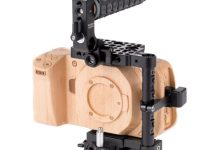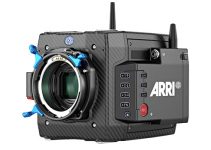Picture profiles are an often overlooked feature in most cameras. Shooters tend to either simply ignore them, or rush directly to filming LOG. Whereas there are several benefits to shooting in a LOG profile, why bother taking the additional time to color grade, add LUTS, and endlessly tweak if it really isn’t required?
Using baked-in settings doesn’t make you a defeatist; in fact, given the limitations of the codecs in most mirrorless and DSLR cameras, filming with a picture profile can actually save you time in post, allow you to be more creative, and improve the overall look of your work. Check out this handy video from Chris Brockhurst to help explain why that is, and what profiles are best for the Sony A7III.
Quite honestly the words “we’ll do it in post” hit editor’s ears like a million knives being jammed into their brains. Tacking on additional tasks for an editor wastes time, and ultimately means you’re relinquishing creative control as a cinematographer. For the most part, any color adjustment that can be done in post can also be done in-camera and often with better results when shooting DSLR or Mirrorless.
There are hundreds of blogs recommending this-and-that setting for the best possible image from your Sony mirrorless camera, but honestly, everything you need is right there under your nose.
You’ve probably glossed over the ‘Creative Styles’ settings on the Sony A7III, but they’re actually easily accessible in the menu system directly next to Picture Profile. Creative Styles on the A7III are a collection of baked-in setting that can be thought of simply a set of custom LUTs specifically created by Sony for stylized, artistic shooting.
They are easy to tweak, in camera, by the user and offer on-the-fly image processing that is encoded and final. Minor adjustments can be made in post, but these would most often be used by someone who doesn’t intend to spend/waste time or money doing a final color grade.
PUBLIC SERVICE ANNOUNCEMENT
Unfortunately, there is a common misconception that filming in LOG is the mark of professionalism, and that color grading is an art form – neither of these are completely true. There are certainly artistic approaches to grading, and also times when filming in LOG is appropriate but overusing it and overdoing it is unnecessary.
We’re all conscious of the fact that 97% of people have absolutely no idea what color grading is or why it is useful. Clients don’t understand why footage is ‘grey’ when we film in LOG, and most people just think the Standard profile looks amazing. Moreover, filming in LOG can be deceptive in the field and lead to improper color balance, exposure, and lighting.
When you’re filming with any camera that is capturing less than a 10-bit 4:2:2 image, LOG should be used sparingly and only in situations of high contrast AFTER you preview your shot with a LUT or picture profile.
If you know you will require additional grading in post, consider shooting your footage in RAW instead of LOG.
Sony A7III Creative Styles
The Sony A7III has 13 Creative Styles settings for you to choose from; some of these can be rather gimmicky (i.e. Sepia), but overall they offer a base look and a pleasing color pallet that can really give your footage a kick.
- Standard:
- For shooting various scenes with rich gradation and beautiful colors.
- Vivid:
- The saturation and contrast are heightened for shooting striking images of colorful scenes and subjects such as flowers, spring greenery, blue sky, or ocean views.
- Neutral:
- The saturation and sharpness are lowered for shooting images in subdued tones. This is also suitable for capturing image material to be modified with a computer.
- Clear:
- For shooting images in clear tones with limpid colors in highlight, suitable for capturing radiant light.
- Deep:
- For shooting images with deep and dense colors, suitable for capturing the solid presence of the subject.
- Light:
- For shooting images with bright and simple colors, suitable for capturing a refreshingly light ambience.
- Portrait:
- For capturing skin in a soft tone, ideally suited for shooting portraits.
- Landscape:
- The saturation, contrast, and sharpness are heightened for shooting vivid and crisp scenery. Distant landscapes also stand out more.
- Sunset:
- For shooting the beautiful red of the setting sun.
- Night Scene:
- The contrast is lowered for reproducing night scenes.
- Autumn leaves:
- For shooting autumn scenes, vividly highlighting the reds and yellows of changing leaves.
- Black & White:
- For shooting images in black and white monotone.
- Sepia:
- For shooting images in sepia monotone.
The simplicity and ease of use with these Creative Styles is perfect for beginners and anyone who (again) doesn’t require image processing in post production. You can use these settings to learn the different uses for various film looks, and practice color grading as you improve your skills.
Chris recommends Autumn Leaves which makes colors a little more vivid in the reds and yellows, and has a pop of contrast that is pleasing to the eye, and Neutral, almost an SLOG-lite that lowers the saturation and allows you to make additional adjustments in post. I’ve also heard several other Sony shooters who prefer the Landscape and Sunset settings.
These settings increase the saturation of the skin tones in your footage, and help the subject stand out from the background. High contrast images draw the viewers attention to the screen.
Blues and oranges are high contrast colors, on opposite sides of the color wheel; a person standing with a blue sky behind them stands out in the image. Movie posters are usually teal and orange to grab your attention. Autumn Leaves and Sunset are also amplifying these hues.
Whichever Creative Style profile you chose to shoot with, they’re an important tool when learning how to color grade but also not just shooting with the standard factory profile.
In my experience as an editor and colorist, shooters tend to rush to LOG thinking grading in post will make all the difference when, in fact, having shot in LOG in the field just tricked their eyes into thinking the color balance was accurate and the exposure was perfect. As soon as we get the footage into post, we see the balance is terrible and the footage is actually much darker than they had originally intended.
We fix these issues as best as we can, but the colors are always left a little distorted looking (because of the codec), and increasing the brightness of the image brings out the noise. Instead of relying on post, give these Creative Style settings a try; they’re very pleasing to the eye and knowing you’re colors are locked-in can help you creatively without giving up your control as a cinematographer.
[source: Chris Brockhurst]
Order Links:
Sony Alpha a7 III Mirrorless Digital Camera (B&H, Amazon)
Disclaimer: As an Amazon Associate partner and participant in B&H and Adorama Affiliate programmes, we earn a small comission from each purchase made through the affiliate links listed above at no additional cost to you.



